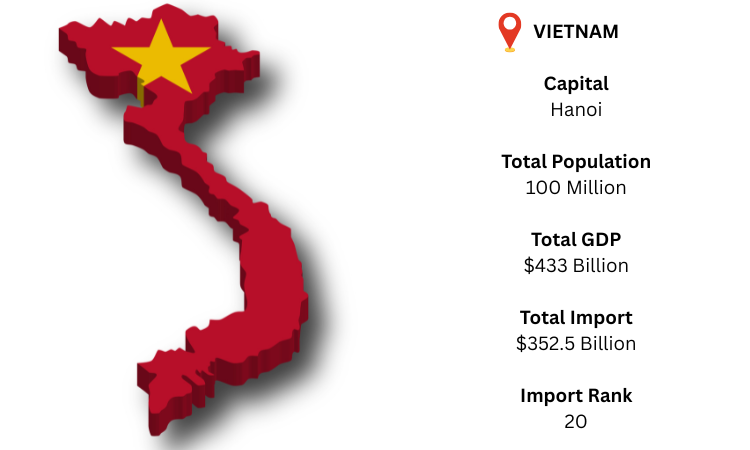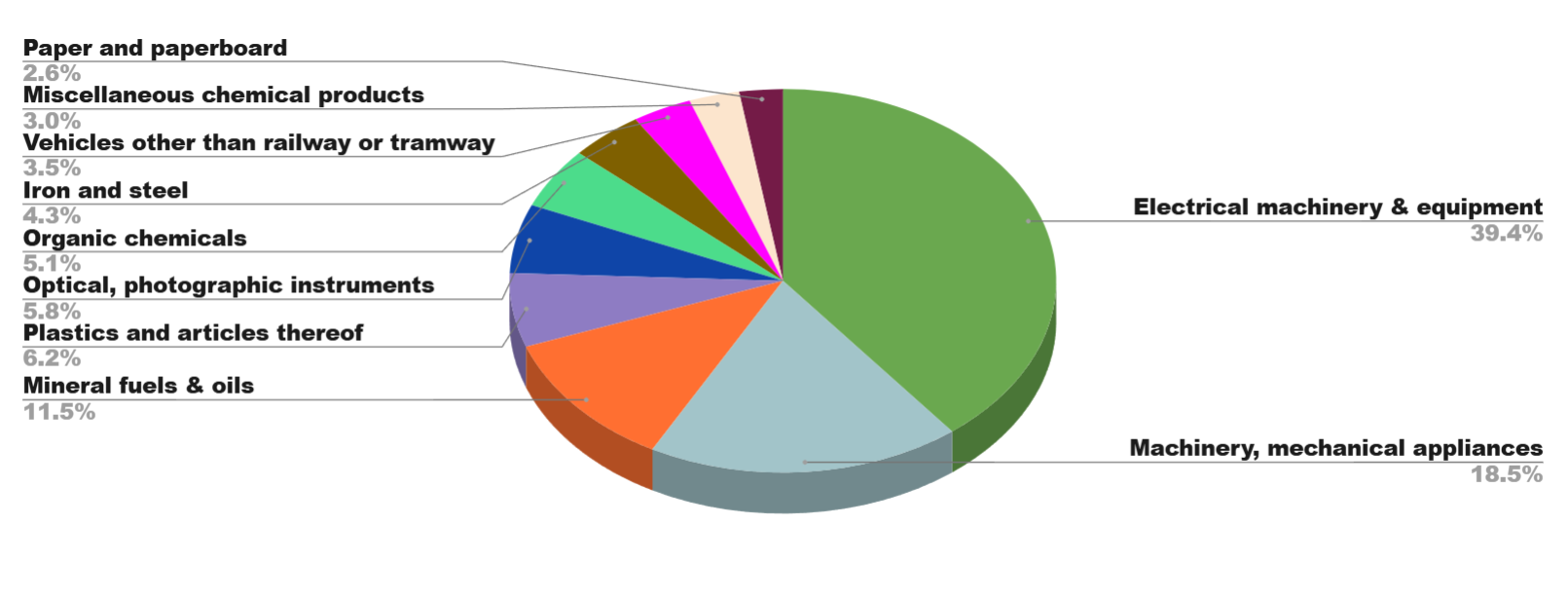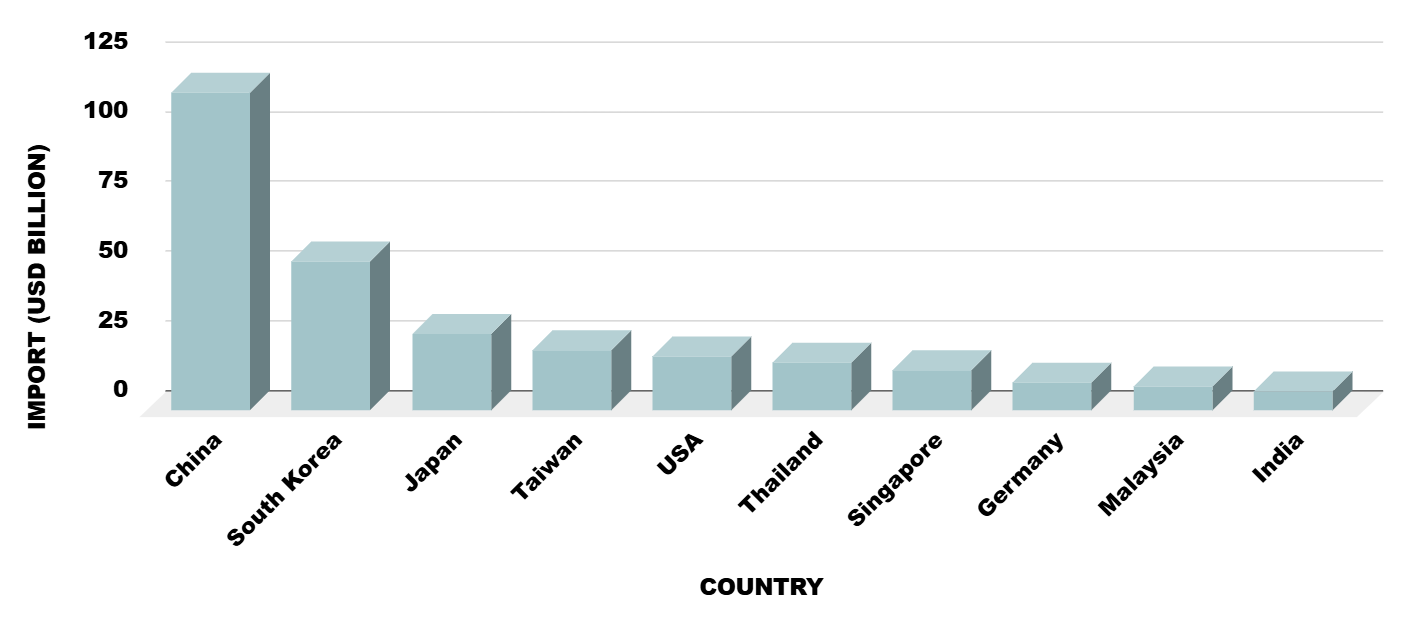On the eastern tip of the Indochina Peninsula is the Southeast Asian nation of Vietnam. Its capital is Hanoi, bordering China, Laos, and Cambodia. Vietnam's GDP was over USD 433 billion in 2024. As per the Vietnam import data, the nation is among the top 20 importers in the world with total imports of USD 352.5 billion.
According to Vietnam customs import data, imports largely support Vietnam's robust industrial and export-oriented economy.



